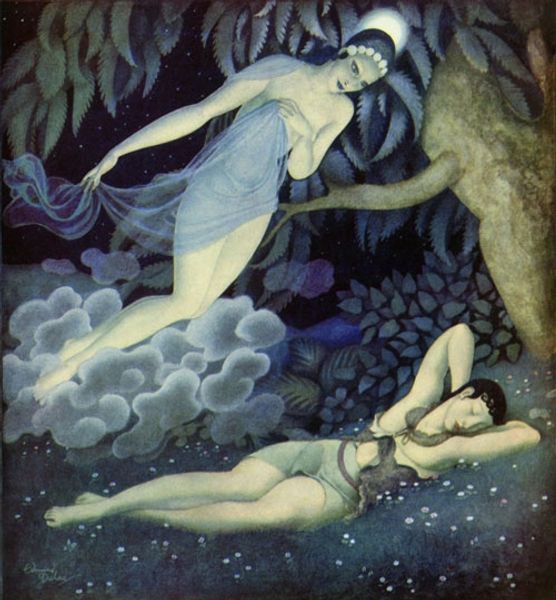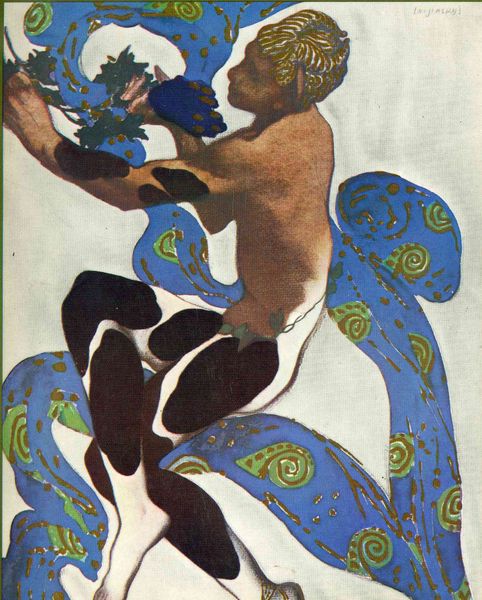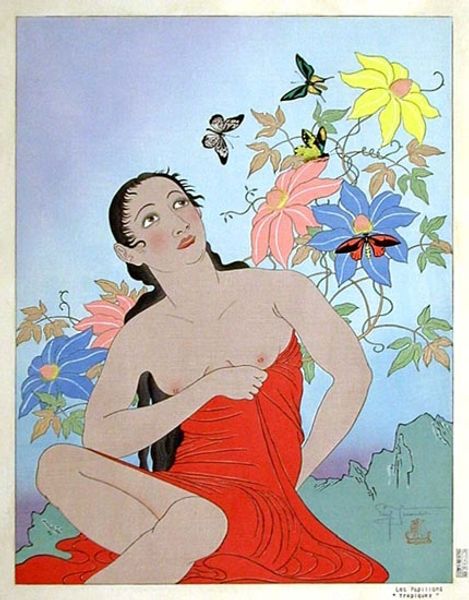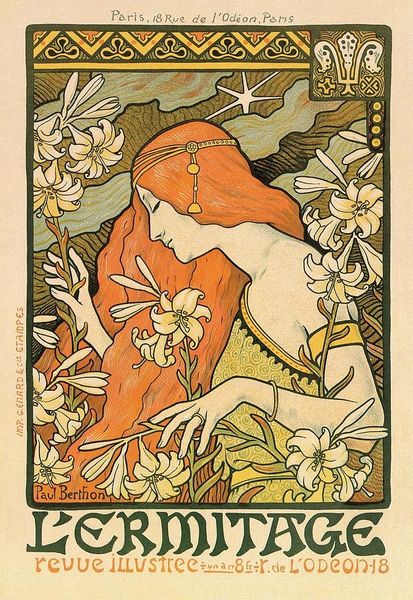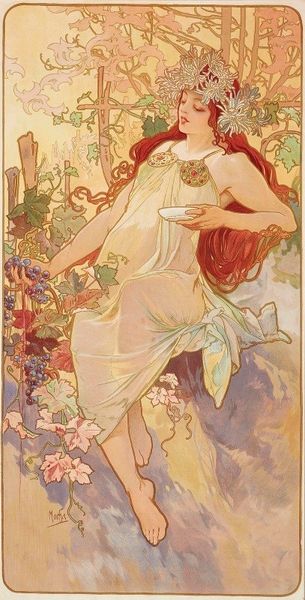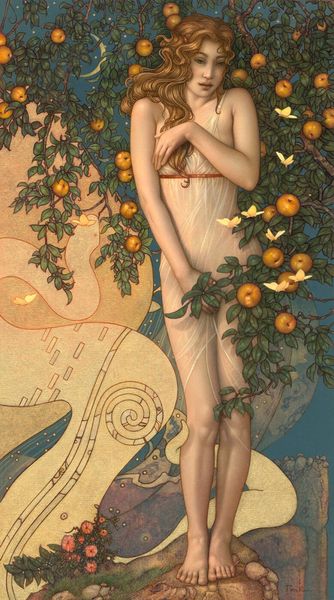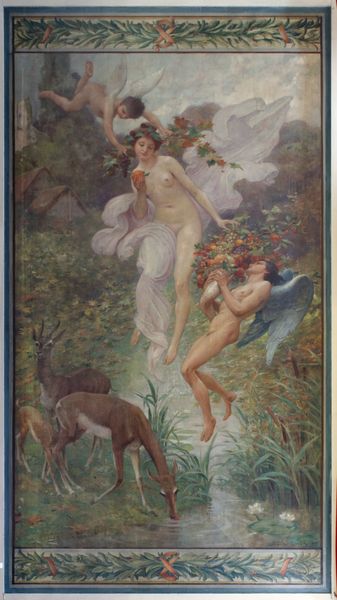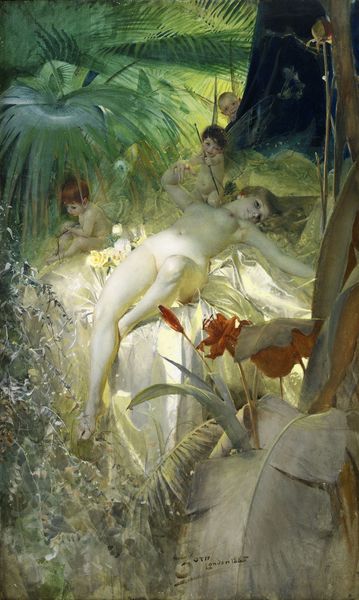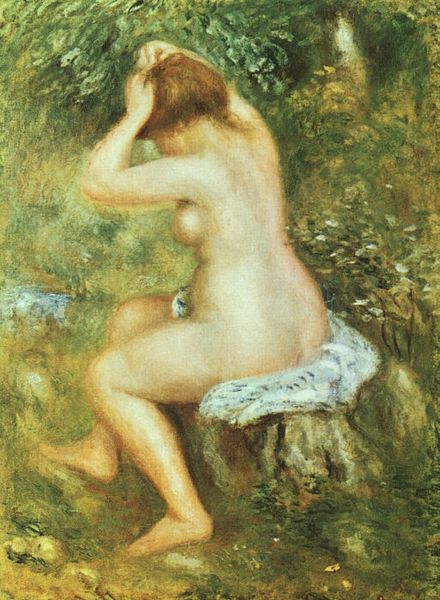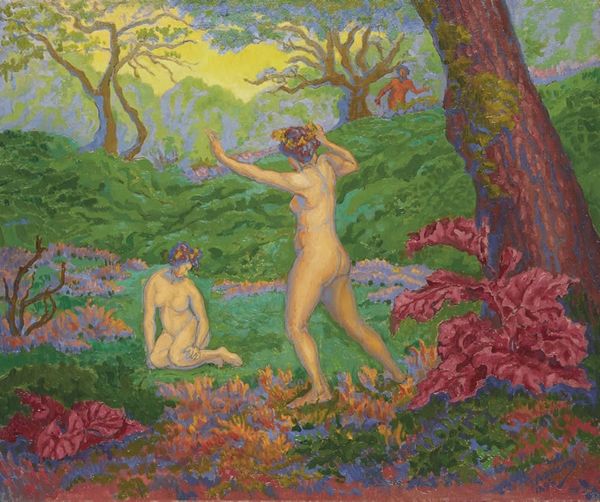
painting, watercolor
#
narrative-art
#
painting
#
landscape
#
fantasy-art
#
figuration
#
watercolor
#
naive art
#
watercolour illustration
Copyright: Public domain US
Editor: This is "A Little Boy Lost," a watercolor painting by Dorothy Lathrop created around 1920. The almost dreamlike rendering of the scene evokes a sense of both innocence and impending…something else. What do you see in this piece? Curator: I see echoes of cultural narratives, specifically the biblical story of Adam and Eve. The boy reaching for the fruit, the prominent snake… these aren't accidental inclusions. How does Lathrop use familiar symbols to stir the viewer’s cultural memory? Notice the expression on the boy’s face. Is it curiosity? Temptation? Fear? Editor: It’s hard to tell. It’s a very blank expression, but it also looks like an image of the fall from grace? Curator: Exactly! The visual language triggers recognition of that familiar narrative but filters it through the lens of childhood innocence. What do the passionflowers symbolize to you? Editor: I'm not sure, what would they represent to an audience in the 1920s? Curator: The passionflower, with its intricate structure and symbolic association with Christ’s Passion, adds another layer. It suggests that inherent beauty is connected with something that might also represent struggle, as in redemption. What is Lathrop implying about childhood, temptation, and loss? Editor: I guess she's reminding us about the cultural memory that impacts what childhood "should" be. I never would have made those connections! Curator: These recurring visual motifs become ingrained in our collective psyche, shaping how we perceive ourselves and our place in the world. That's the beauty and the power of iconography.
Comments
No comments
Be the first to comment and join the conversation on the ultimate creative platform.
